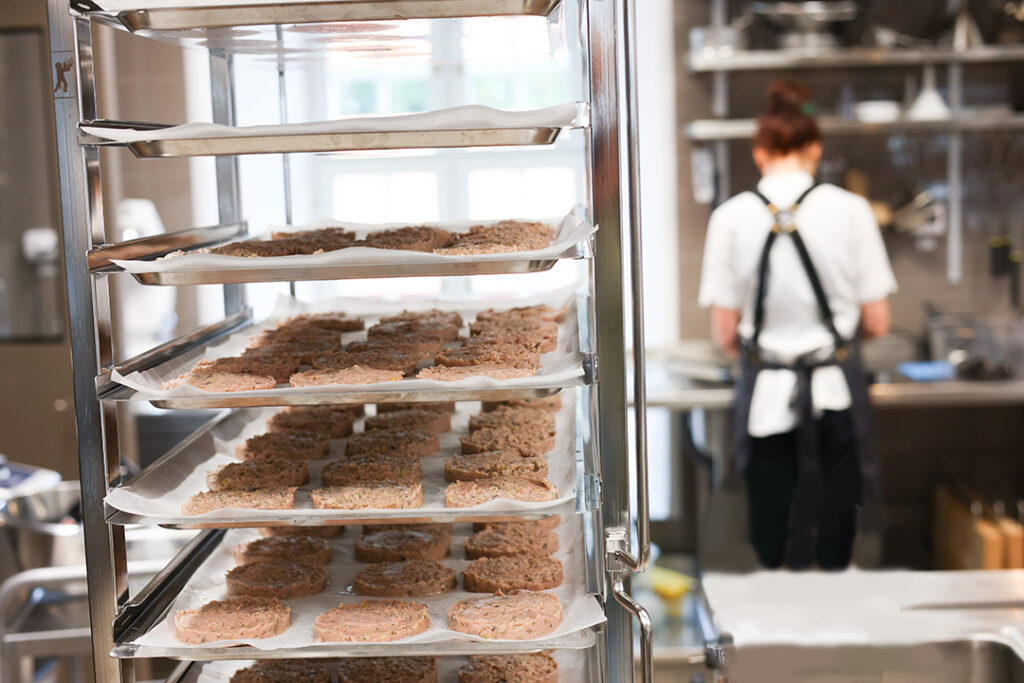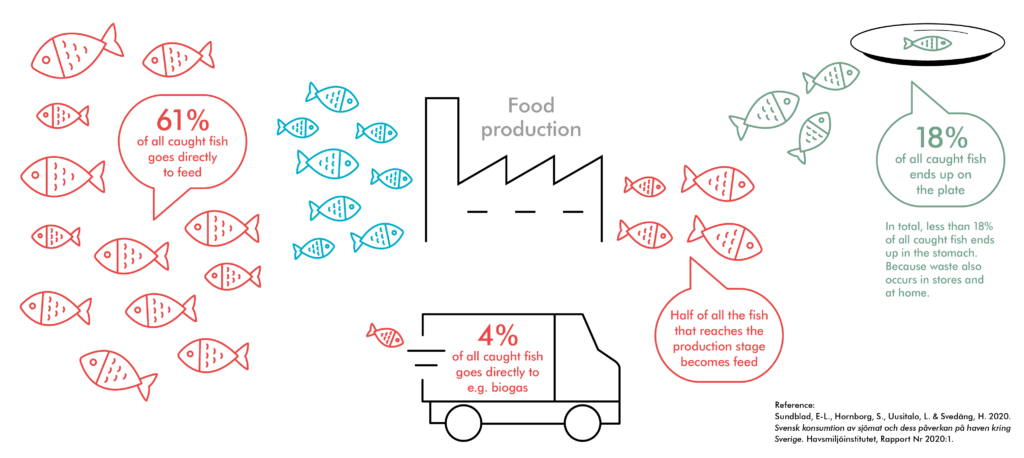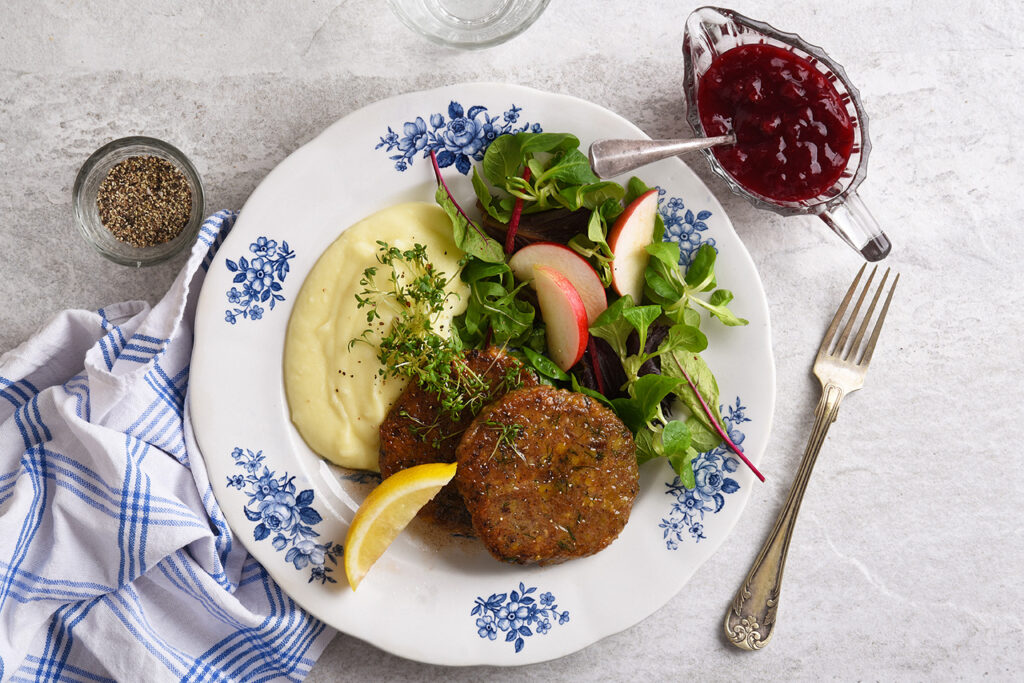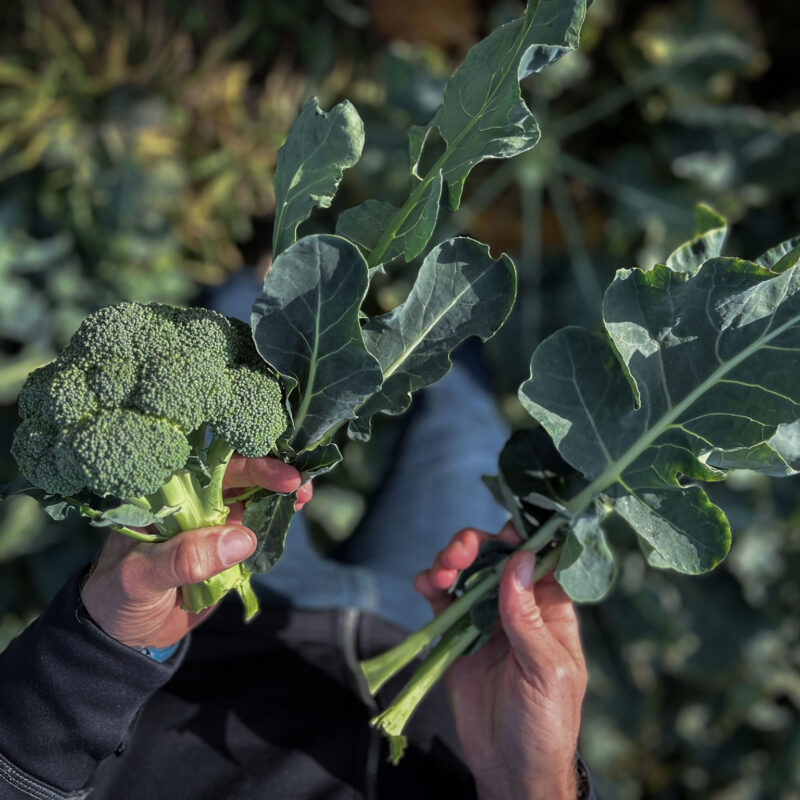Swedish Herring – From Animal Feed to Innovative Everyday Meals
Less than a fifth of Sweden's fish catch reaches the dinner plate. A massive waste of resources that the Herring mince project now aims to change. At its core is an innovative process that utilizes the meat between herring bones – a flavorful ingredient previously used for fish feed, now repurposed for a herring mince. Axfoundation, in collaboration with researchers, chefs, and food companies at Torsåker Farm, are working to make way for more flavorful, nutrient-dense, and sustainable products. In early 2024, the "Sillenbergare", combining herring mince and legumes, hit the market.

The mince is tested practically at Torsåker Farm's test kitchens to develop new attractive and healthy products for consumers.
The Issue
Less than 18% of Sweden’s fish catch becomes food. So where does the rest go? Over 60% goes directly to feed, but even from the fish entering the food production a significant amount ends up as feed. Swedish consumers predominantly eat fillets, resulting in 20-80% of the fish in food production never ending up on our dinner plates. With herring, fillets make up less than half of the fish’s weight, yet scientists have shown that most parts of the fish could be used as food. This is not only a significant waste of resources but also a loss in taste. The finest parts of the fish muscle, such as the meat in the neck muscle and inner fillet, are discarded despite being a perfect ingredient for fish mince.

Where do all the fish in Sweden go?
Our Solution
To make use of a fantastic ingredient that currently becomes fishmeal, an innovative process and market demand are essential. In the Herring mince project, Axfoundation collaborates with researchers and practitioners to tackle the challenge and find a practical solution – from catch to finished product. A crucial component is the process developed by Sweden Pelagics and Chalmers University of Technology for handling herring and similar fish. This process adapts the classic fillet line in the fish factory, allowing more parts of the fish to be separated. This makes the sensible fish meat easier to handle, and to use in products like mince, which can be used in a range of products.
Fish mince require careful food hygiene. The process includes an innovative handling of the mince. To prevent rancidity and bacterial growth, the mince is dipped in an antioxidant bath with extracts of rosemary, citric acid, as well as vitamins E and C. This results in a well-tasting herring mince made from byproducts, with high quality and long shelf life. The mince is tested practically at Torsåker Farm’s test kitchens to develop new attractive and healthy products for consumers.

In early 2024, the "Sillenbergare" was released. Photo: Middagsfrid
Our Work
Axfoundation’s role in the Herring mince project is to increase market demand and interest and to broaden the use of herring mince made from byproducts. By collaborating with, among others, the meal kit company Middagsfrid for product development and consumer information, solutions can be tested in practice before scaling up to restaurants and public kitchens.
It’s about time that everyone in the supply chain, from fishermen to consumers, take greater anatomical responsibility. We simply need to make use of the entire food resource. Our ambition in this project is that herring, which was previously used for feed, becomes available to consumers as herring mince – a tasty, nutritious, and sustainable choice that can be used, among other things, in herring patties.
– Veronica Öhrvik, Project Manager Future Food, Axfoundation

At Torsåker Farm, Herring mince has been evaluated from various perspectives, including sustainability, nutritional content, and sensorical properties.
Results
At Torsåker Farm, herring mince has been evaluated from various perspectives, including sustainability, nutritional content, and sensorical properties. The innovation team has successfully expanded the 50/50 concept, developing a herring patty where herring mince is mixed with minced Swedish broad beans — a win in terms of taste, texture, and nutritional content. The product, tested with 50 families in collaboration with the meal kit company Middagsfrid, received positive results, with almost 75% willing to eat the herring patty again. The positive response has led to increased interest in the herring mince. In early 2024, the “Sillenbergare” hit the market.
0
% could consider eating the herring again
0
% thought the product was "super tasty"
0
% would choose the product in a meal kit
The herring mince is an incredibly multifaceted ingredient that is just as nutritious and tasty as it is useful in the kitchen.
– Anna Henning Moberg, Head of Operations Torsåker Farm, Axfoundation
What is 50/50?
The 50/50 concept simply involves using half animal-based ingredients and half plant-based ingredients, such as Swedish legumes, in everything from meatballs to herring patties. 50/50 enhances flavor, provides a fine texture, and offers high nutritional content while reducing the climate footprint of food.
The 50/50 concept has been a natural part of Torsåker Farm’s meal concept since 2017. Today, it is becoming increasingly common on Swedish dinner tables, especially since Jessie Sommarström won Chef of the Year in 2023 and chose to make the 50/50 meatball the Dish of the Year.
Partners
Axfoundation collaborates with Sweden Pelagics AB, Middagsfrid, Urban Deli and Chalmers Department of Life Sciences in the project.























































